15 Thermodynamics definitions, important points and examples
Thermodynamics definitions, important points and example
1. System:
- A system refers to a specific region of space that is being studied in thermodynamics.
- It can be a physical object, a chemical reaction, or a combination of both.
- The boundaries of a system can be real or imaginary, depending on the context of the study.
- Understanding the properties and behavior of a system is essential in thermodynamic analysis.
Examples:
A gas-filled balloon, a chemical reaction vessel, a power plant.
2. Surroundings:
- Surroundings include everything outside of the system being studied.
- It interacts with the system and can exchange energy or matter with it.
- The state and properties of the surroundings may influence the behavior of the system.
- The surroundings provide a reference point for understanding the changes occurring within the system.
Examples:
The atmosphere surrounding a chemical reaction, the cooling water in a heat exchanger.
3. State:
- The state of a thermodynamic system refers to its condition defined by properties like temperature, pressure, volume, and composition.
- The state variables represent the macroscopic characteristics of the system at a given point in time.
- The state of a system can change through processes such as heating, cooling, and expansion.
- Thermodynamic analysis involves studying the changes in state variables during these processes.
Examples:
A gas in a compressed cylinder, a liquid at a specific temperature and pressure.
4. Internal Energy:
- Internal energy is the sum of the kinetic and potential energies of the particles within a system.
- It represents the total energy of the system's microscopic components.
- Internal energy is influenced by factors such as temperature, pressure, and composition.
- Changes in internal energy occur during processes involving heat transfer and work done on or by the system.
Examples:
Vibrational and rotational energies of molecules, the thermal energy of a substance.
5. Work:
- Work in thermodynamics refers to the energy transferred when a force is applied to an object and it moves a certain distance.
- Work can be done on a system or by a system, resulting in a change in the system's energy.
- Work can take different forms, such as expansion work, electrical work, or shaft work.
- The calculation of work involves considering the force applied and the displacement of the system.
Examples:
A piston pushing against a gas, an electric motor doing mechanical work.
6. Heat:
- Heat, on the other hand, refers to the energy transferred between objects or systems as a result of a temperature difference.
- It flows spontaneously from a region of higher temperature to a region of lower temperature.
- Heat transfer mechanisms include conduction, convection, and radiation.
- Heat is represented as a positive value when it is added to a system and negative when it is lost.
Examples:
Heat transfer from a burner to a pot, the warmth of sunlight on the Earth's surface.
7. First Law of Thermodynamics:
- The First Law of Thermodynamics, also known as the Law of Conservation of Energy, states that the total energy of a system and its surroundings remains constant.
- It is important to note that while energy cannot be created or destroyed, it can be converted from one form to another.
- The first law connects the concepts of heat transfer, work, and internal energy changes in a system.
- It provides the basis for understanding energy balance in various thermodynamic processes.
Examples:
Heat released during combustion, energy conversion in a heat engine.
8. Second Law of Thermodynamics:
The Second Law of Thermodynamics expresses that in any spontaneous process, the total entropy of a system and its surroundings always increases over time.
Entropy, defined as the measure of disorder or randomness in a system, provides insight into the direction of natural processes.
It sets a direction for the flow of energy and helps identify the efficiency limits of energy conversion.
Examples:
Heat flow from hot to cold, diffusion of gases to equalize concentration.
9. Entropy:
- Entropy is a measure of the disorder or randomness of a system.
- It quantifies the number of microscopic arrangements consistent with the system's macroscopic properties.
- The increase in entropy reflects the tendency of a system to evolve towards a more probable state.
- Entropy is related to energy dispersal and the availability of energy for useful work.
Examples:
Melting of ice into water, mixing of different gases.
10. Enthalpy:
- Enthalpy is a thermodynamic function that accounts for the internal energy of a system and the product of its pressure and volume.
- It is often associated with heat transfer occurring at constant pressure.
- Changes in enthalpy, represented as ΔH, provide insight into heat exchange during chemical reactions and phase changes.
- Enthalpy is used to analyze energy changes in open systems, such as chemical reactions in a lab or industrial processes.
Examples:
Combustion reactions, vaporization of a liquid.
11. Heat Capacity:
- Heat capacity refers to the amount of heat required to raise the temperature of a substance by one degree Celsius.
- It is a material-specific property that depends on the mass and composition of the substance.
- Heat capacity is commonly measured at constant pressure (Cp) or constant volume (Cv).
- It quantifies the ability of a substance to store thermal energy.
Examples:
Specific heat capacity of water, molar heat capacity of gases.
12. Adiabatic Process:
- An adiabatic process is a thermodynamic process in which no heat is exchanged between a system and its surroundings.
- Energy transfer occurs only through work done on or by the system.
- Adiabatic processes are often rapid and occur without sufficient time for heat exchange to take place.
- They are commonly encountered in certain chemical reactions and industrial applications.
Examples:
Rapid compression or expansion of a gas, adiabatic flame temperature in combustion.
13. Isobaric Process:
- An isobaric process is a thermodynamic process that occurs at constant pressure.
- The pressure of the system remains constant while other properties, such as volume and temperature, may change.
- Isobaric processes are commonly encountered in situations where the system is in contact with a constant-pressure environment.
Examples:
Heating a liquid in an open container, isobaric expansion of a gas in a piston-cylinder device.
14. Isothermal Process:
- An isothermal process is a thermodynamic process that occurs at constant temperature.
- The temperature of the system remains constant while other properties, such as pressure and volume, may change.
- Isothermal processes are often achieved by maintaining the system in contact with a thermal reservoir.
Examples:
Expansion of an ideal gas in contact with a heat bath, phase changes at constant temperature.
15. Thermodynamic Equilibrium:
- Thermodynamic equilibrium refers to a state in which all the properties of a system are uniform and do not change over time.
- In equilibrium, there is no net transfer of heat or work between the system and its surroundings.
- The system's properties, such as temperature, pressure, and composition, remain constant.
- Equilibrium can be attained through various processes, such as heating and cooling or chemical reactions.
Examples:
A container of gas at a uniform pressure and temperature, a mixture of gases in which all components have reached their partial pressure equilibrium.
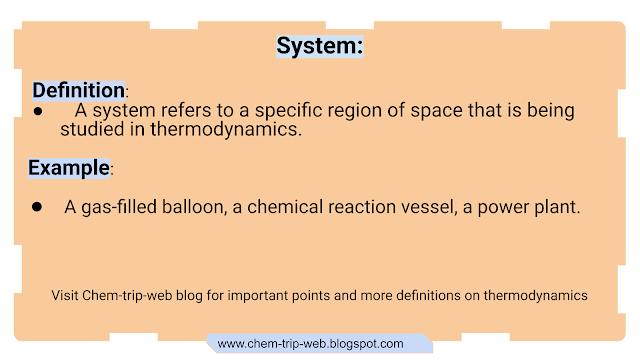
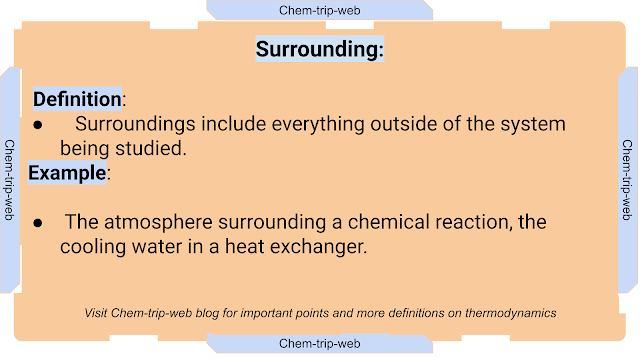

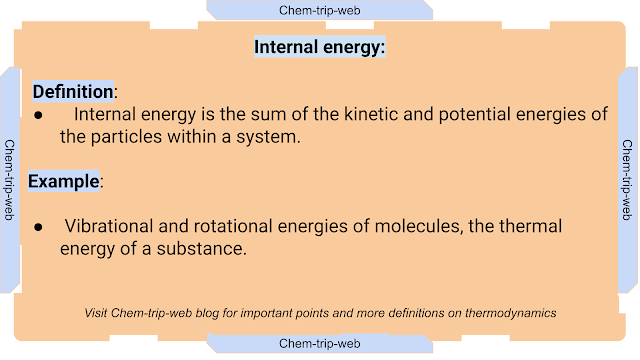



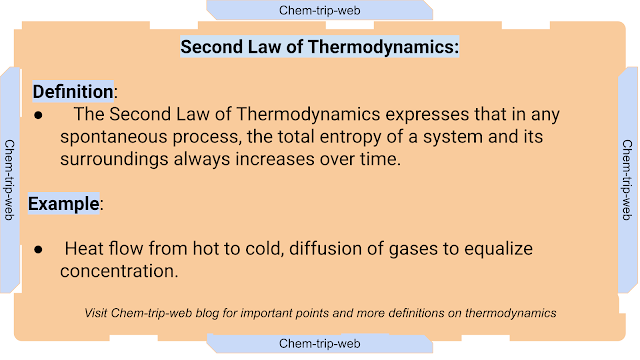



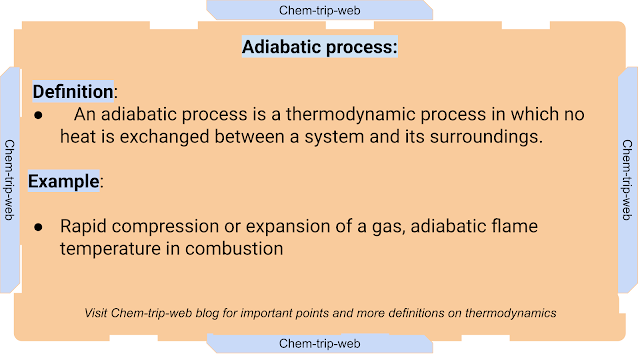



Comments
Post a Comment